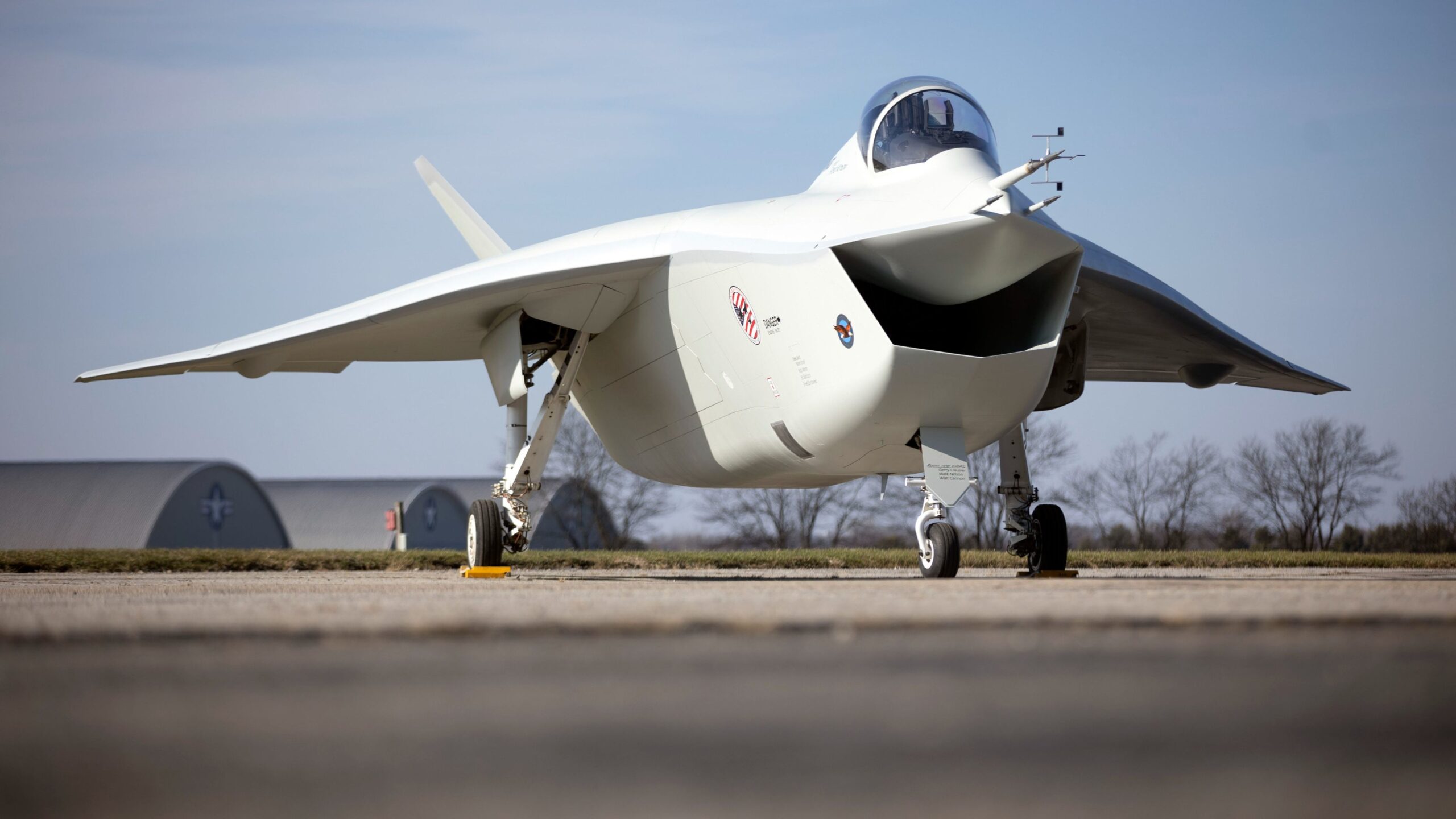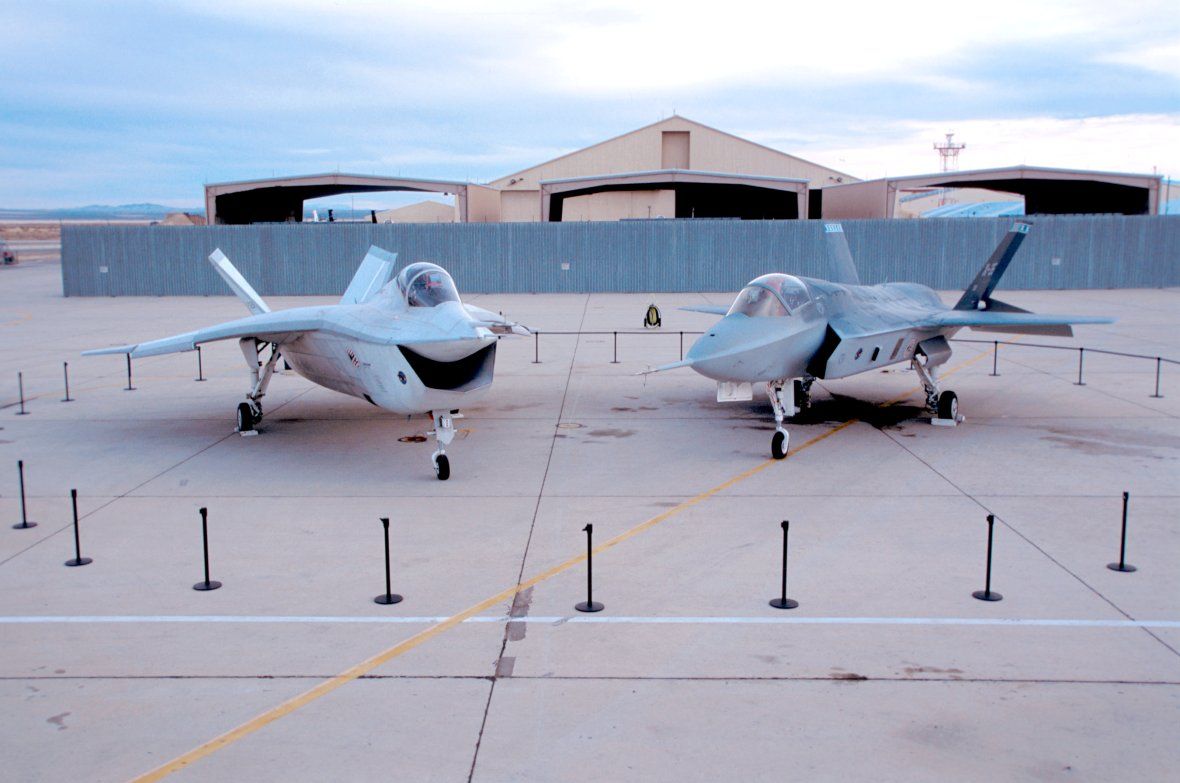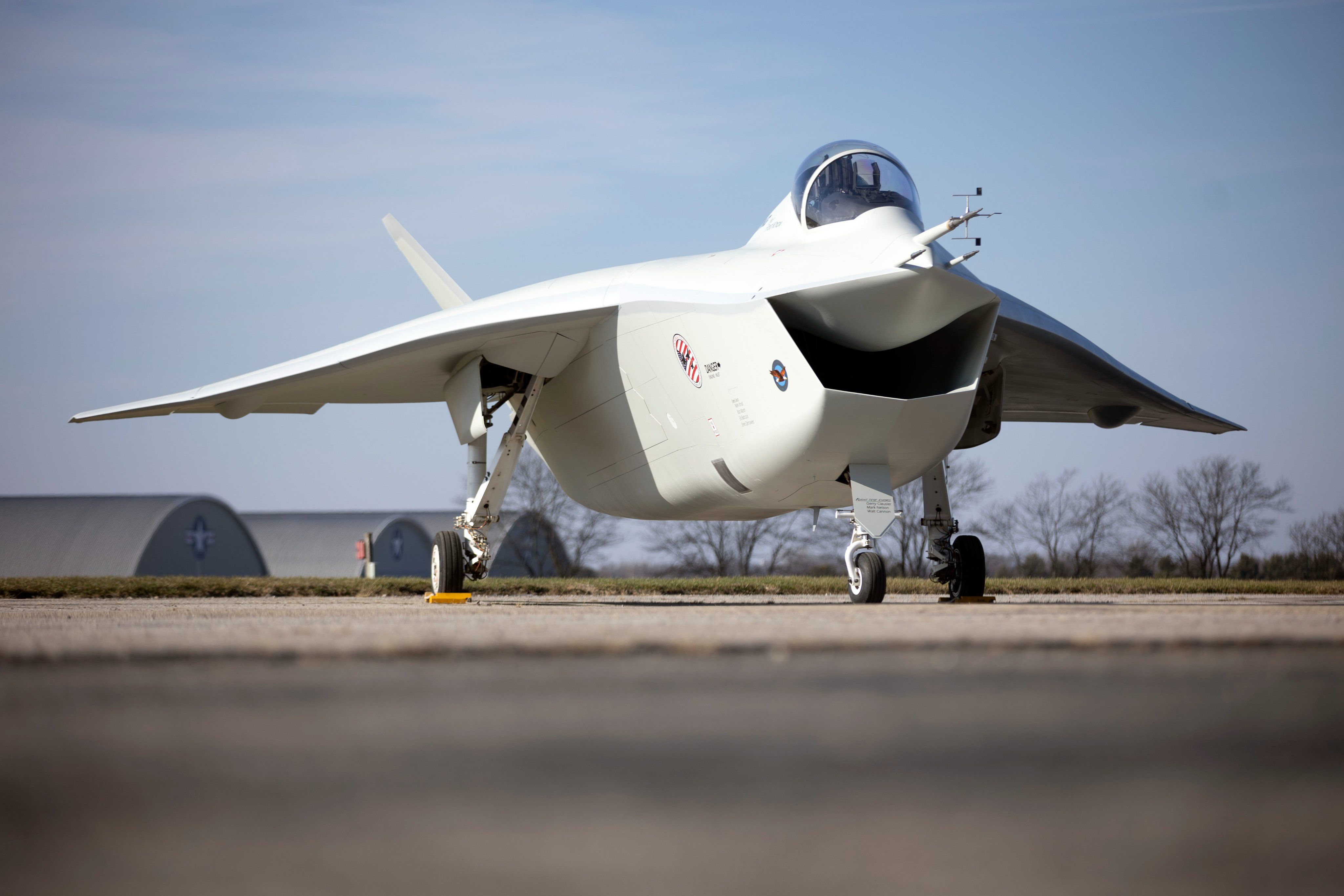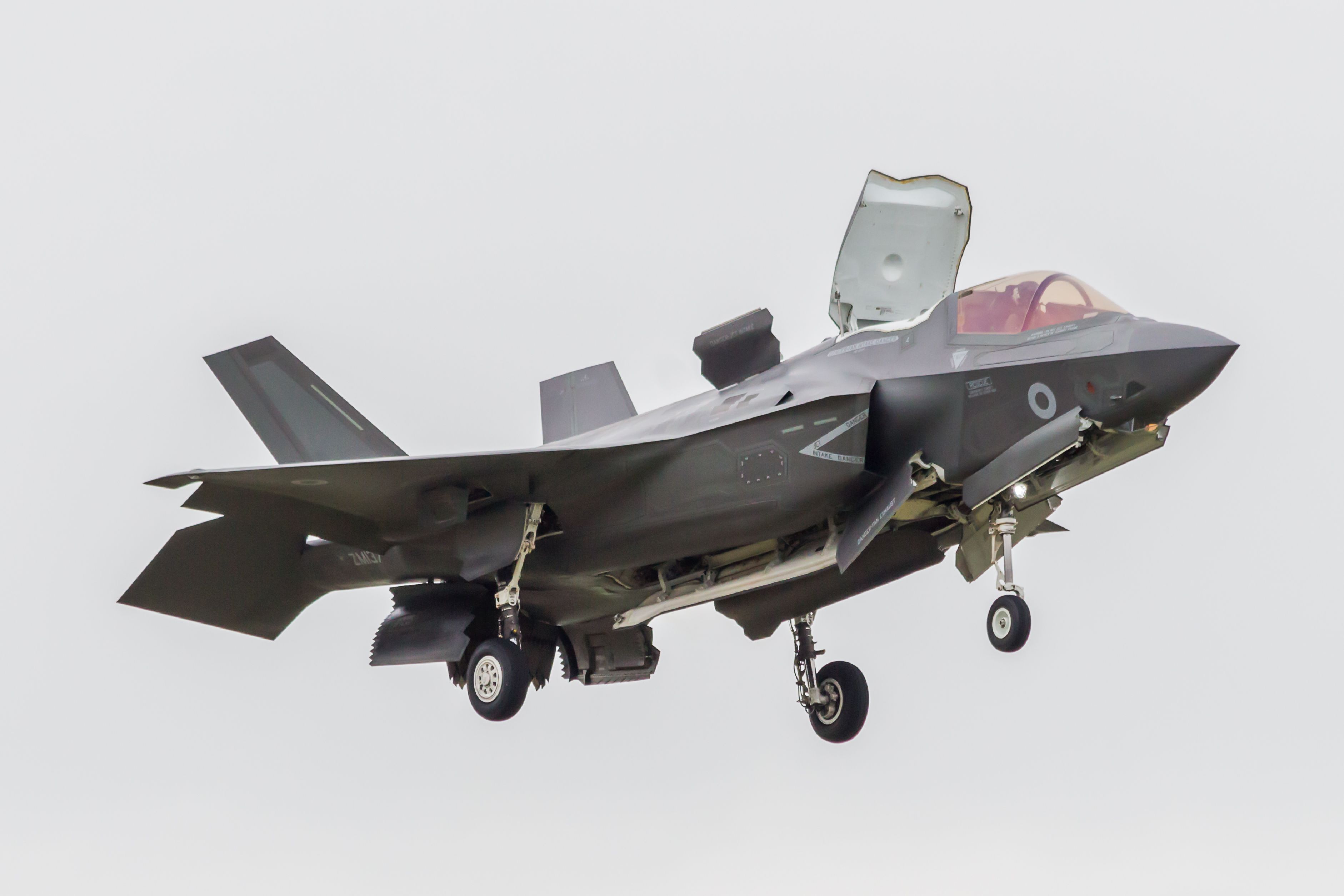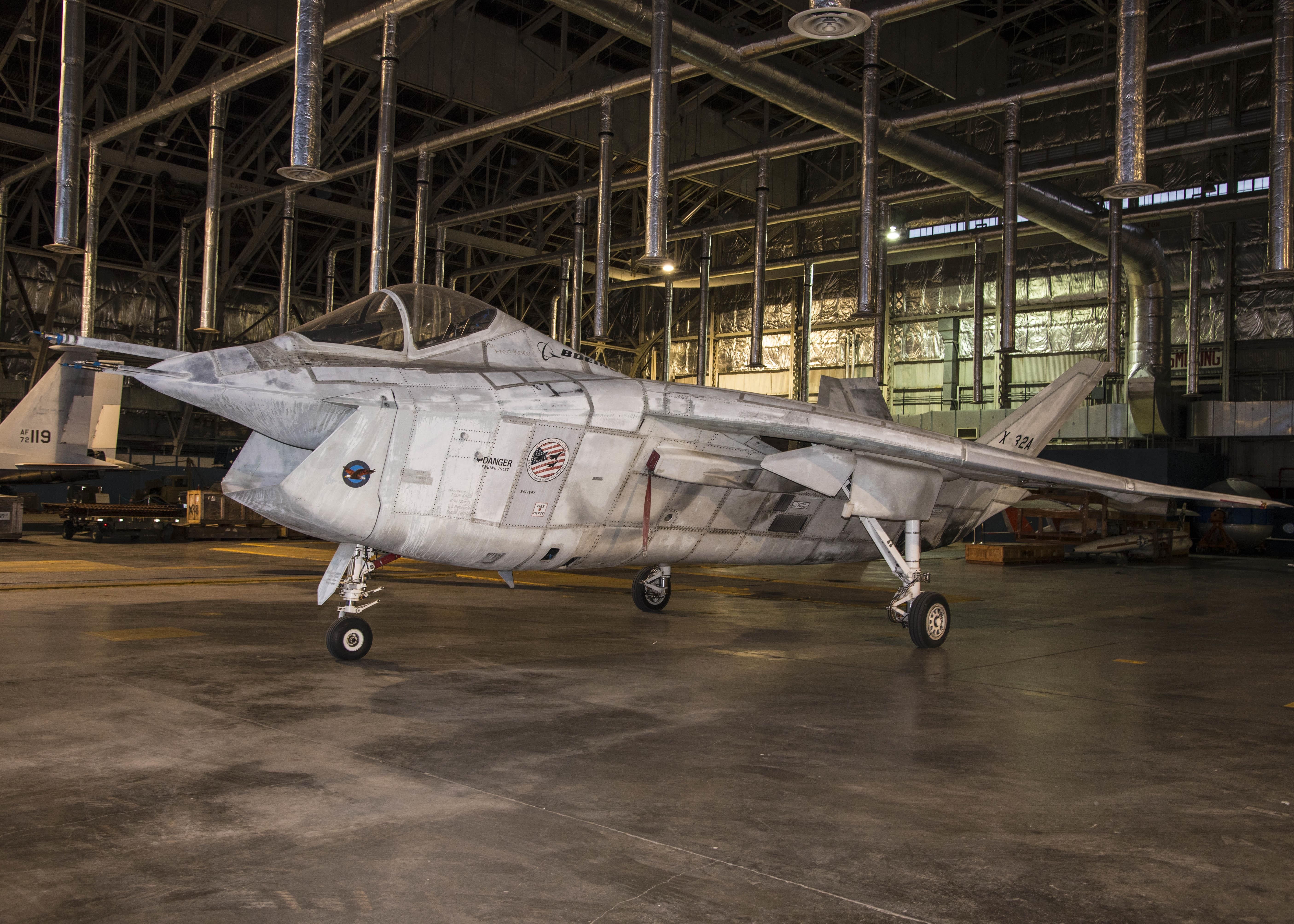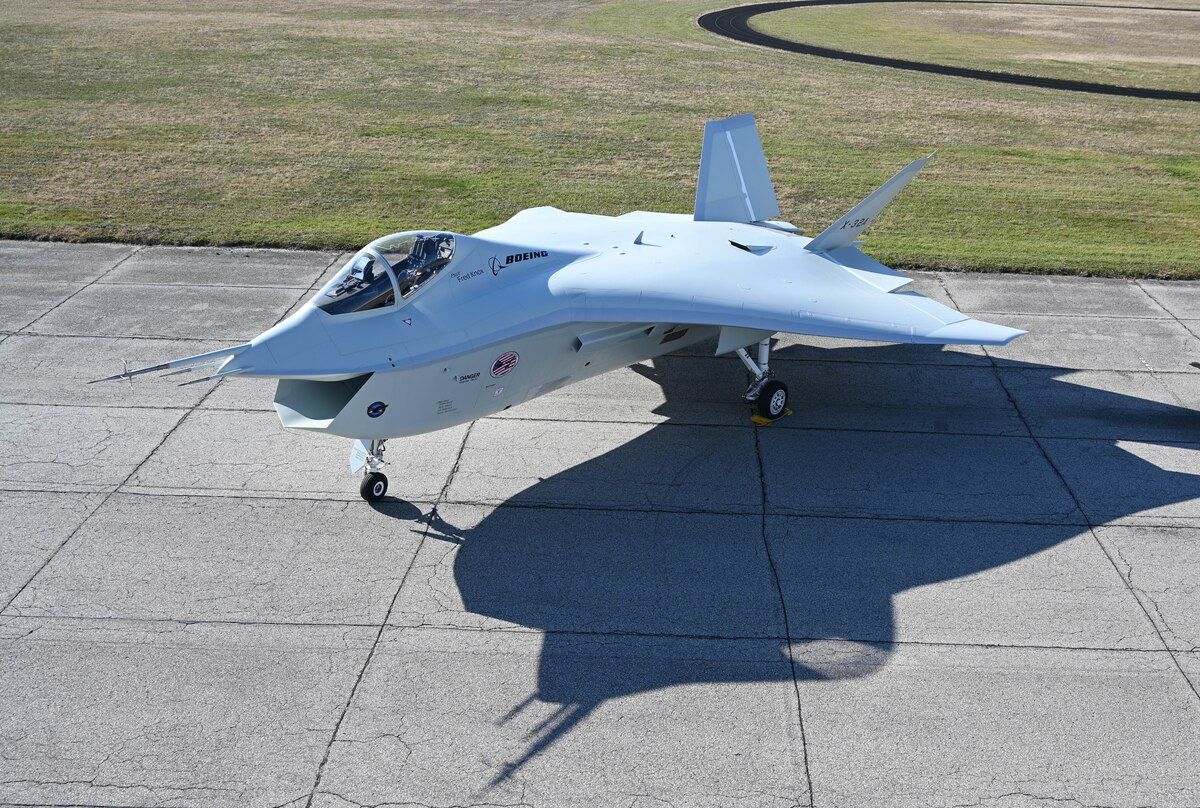Boeing and Lockheed often go head to head for large projects when it comes to the US defense market. So it was to no great surprise when they locked horns for the Joint Strike Fighter (JSF) program. As the world knows ultimate triumph went to Lockheed Martin in the end, and F-35
Lightning 2s now patrol the skies in every corner of the world – flying for the USAF
, USMC
, USN
as well as the banner of many allies. So what did Lockheed’s X-35 do to impress the Pentagon that the Boeing X-32 could not?
Photo: U.S. Air Force
Boeing’s happy couple, the X-32’s
Boeing developed two demonstrators, the X-32A and X-32B, which conducted over 140 test flights between 2000 and 2001, showcasing capabilities like MACH 1.6 speed, in-flight refueling, and carrying six air-to-air missiles. Initially designed with a delta wing, Boeing later shifted to a conventional wing model for the F-32, but this change hurt their competitive edge.
Photo: National Museum USAF
The X-32B excelled in short-take-off and vertical landing, while the X-32A demonstrated conventional take-off and carrier approach capabilities. Both prototypes featured chin inlets for improved speed and maneuverability. However, concerns about their weight (50,000 pounds) and thrust compared to the Lockheed X-35, which had a single, versatile design, ultimately put Boeing at a disadvantage.
Despite losing the competition, Boeing accepted the outcome and applied the lessons learned to future projects, including the F/A-18 E/F Super Hornet and the X-45A Unmanned Combat Air Vehicle.
Photo: Clive117 I Shutterstock
Lockheed’s Triumphant X-35
The Lockheed Martin X-35 was ultimately the victorious entry in the Joint Strike Fighter program, drawing on technologies from earlier aircraft like the F-22
Raptor and Convair Model 200. Notably, its three-bearing swivel nozzle design was influenced by the Convair project, while Lockheed analyzed data from the Yakovlev Yak-141 to enhance its capabilities.
The X-35 introduced advanced helmet-mounted displays, marking a departure from traditional head-up displays in modern combat aircraft. Lockheed
and Boeing each produced two prototypes for testing, with the X-35A later converted into the X-35B for short takeoff and vertical landing (STOVL) capabilities, and the X-35C designed for carrier operations. Both prototypes utilized Pratt & Whitney
F119 engines, with the X-35B also featuring a Rolls-Royce Lift Fan.
A key aspect of the X-35’s design was its commonality across variants, allowing the STOVL and conventional takeoff and landing (CTOL) models to share an aerodynamic configuration. The successful demonstration of the X-35’s performance led to Lockheed being awarded the System Development and Demonstration (SDD) contract on October 26, 2001.
The X-35 evolved into the F-35 Lightning II, which included enhancements like a longer fuselage and redesigned inlets to accommodate mission systems. The F-35 ultimately comprised three variants: F-35A (CTOL), F-35B (STOVL), and F-35C (carrier-capable), each tailored to specific operational requirements.
Photo: National Museum USAF
The X-32’s curb appeal, or lack thereof
When Yates joined the Joint Strike Fighter (JSF) program, he discovered that Boeing’s X-32 design was based on a secret stealth concept from a “black program.” This decision may have negatively impacted Boeing’s chances of winning the JSF contract. Testing was limited, as the demonstrator aircraft did not undergo rigorous evaluations for high-G maneuvers or top speeds. Each contractor received $1 billion to develop their designs based on basic requirements without direct competition.
Yates explained that the program office sought to avoid Congressional scrutiny, allowing teams to create their own flight test programs. Consequently, the X-32 and Lockheed Martin’s X-35 followed separate testing regimes. Yates praised the X-32’s handling, likening it to an F/A-18, making it suitable for carrier
operations.
Photo: National Museum of the US Air Force
However, during STOVL tests, the X-32 faced significant challenges, requiring maintenance modifications for vertical lift, while the X-35 demonstrated both STOVL and supersonic
capabilities in one configuration. Lockheed’s advanced lift fan and exhaust system provided a crucial technological advantage. Aesthetic factors also influenced the outcome; the X-32 was often criticized for its appearance, while the X-35 resembled a traditional fighter.
Despite Boeing’s focus on functionality over form, Yates believed that the X-32’s design shortcomings, coupled with its less favorable esthetics, ultimately swayed the JSF program in favor of Lockheed’s X-35, which presented a more advanced and appealing aircraft.
Joint Strike Fighter
In the end, Lockheed Martin simply presented a more mature prototype with the kind of technological advancement expected from a next generation fighter program. Although, Boeing was not able to win a contract for serial production, the story did not end for the X-32.
The F-35 variants serve all over the world and bear the flag of many allied nations in the name of preserving freedom. Lockheed’s newest jet
will certainly go on to leave its mark on the world as one of the most revolutionary and prolific combat fighters of our time. However, the US Air Force has seen fit to give the X-32 a place in history as well. Having recently restored the prototype
.
You can see the ungainly little jet if you visit the US Air Force museum at Wright Patterson Air Force Base in Ohio. It may not have been able to find a place among the flightline of combat squadrons, but it certainly has found a home in the annals of aviation history.

